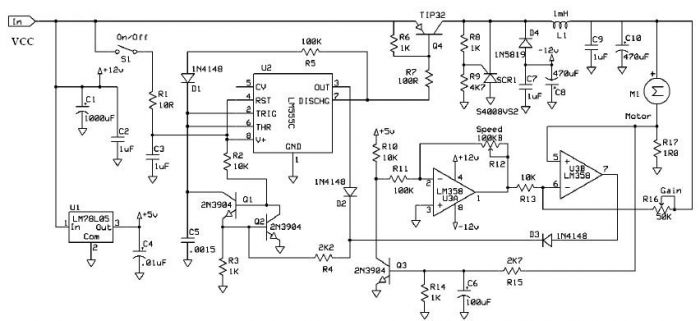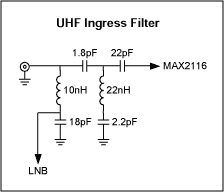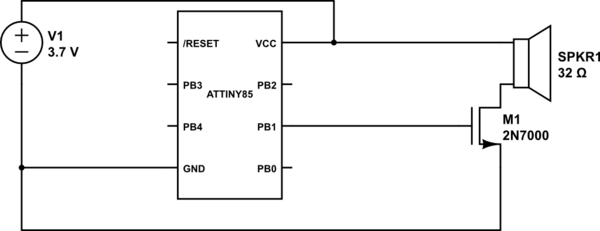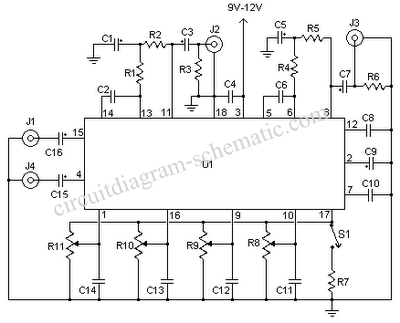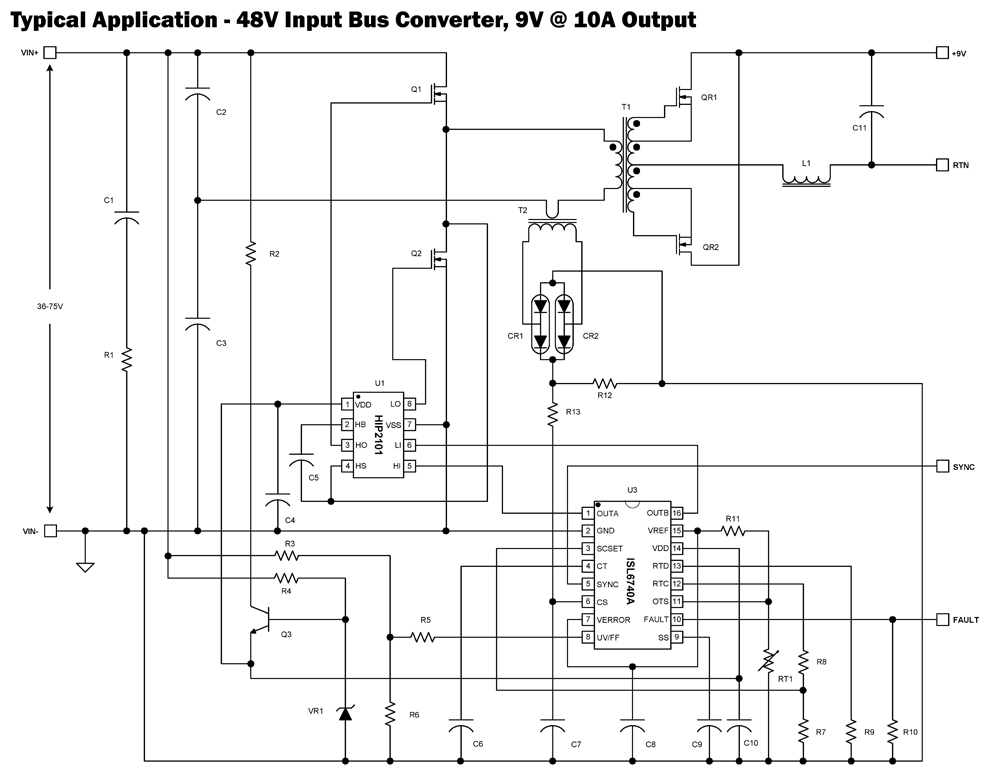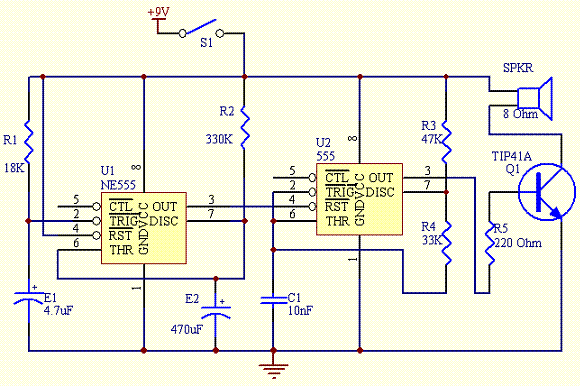
TDA1524 Stereo Tone Control
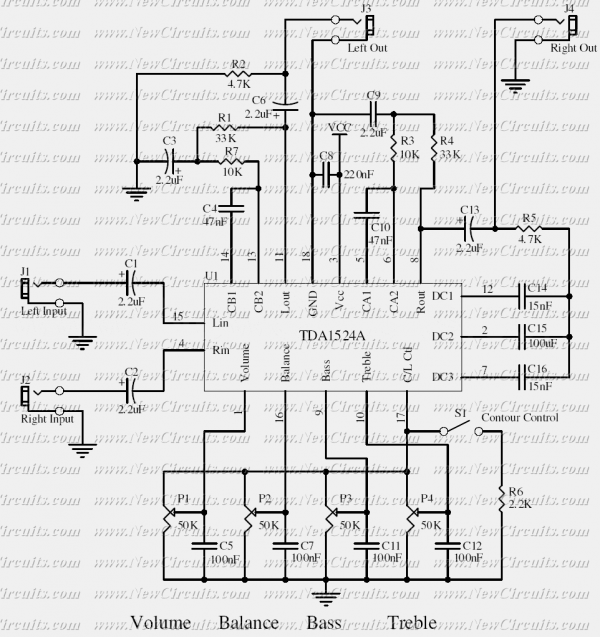
This simple tone control can be used in many audio applications. It can be added to amplifiers, used as a stand-alone control module, or even built into new and exciting instruments. Its one IC construction makes it a very compact circuit, as only a few support components are required. Plus, it does not use a dual power supply. More: This means that the circuit will run from VCC = 9V to 15V (although the bass will be a little weak at 9V). S1 is a contour control. Volume is controlled by P1. Balance is controlled by P2. P3 and P4 control bass and treble, respectively. J1 is the left.
This tone control circuit is designed to enhance audio signal processing in various applications, providing flexibility and ease of integration. The circuit utilizes a single integrated circuit (IC), which simplifies the design and minimizes the number of external components required, thus ensuring a compact layout suitable for both standalone modules and embedded applications in musical instruments.
The power supply for the circuit operates within a range of 9V to 15V. It is important to note that while the circuit is functional at 9V, the bass response may be diminished, indicating that optimal performance is achieved at higher voltages. This characteristic allows for versatility in different setups, accommodating a range of power supply options.
The control interface consists of several potentiometers and switches that allow users to manipulate the audio output. S1 functions as a contour control, enabling users to adjust the tonal characteristics of the audio signal. P1 is designated for volume control, providing a means to adjust the overall loudness of the output. P2 serves as a balance control, allowing for fine-tuning of the audio signal between left and right channels, which is critical in stereo applications.
Furthermore, P3 and P4 are dedicated to bass and treble adjustment, respectively. These controls enable users to tailor the audio output to their preferences, enhancing the listening experience by compensating for room acoustics or personal taste in sound. The left audio channel output is connected through J1, which is likely a jack or terminal for easy connectivity to other audio equipment.
Overall, this tone control circuit is a versatile solution for audio enhancement, suitable for a variety of applications, from home audio systems to professional musical instruments. Its compact design and straightforward controls make it an attractive option for audio engineers and hobbyists alike. This simple tone control can be used in may audio applications. It can be added to amplifers, used as a stand alone control module, or even built into new and exciting instruments. It's one IC construction makes it a very compact circuit, as only a few support components are required.
Plus, it does not use a dual power supply. This means that the circuit will run from VCC = 9V to 15V (although the bass will be a little weak at 9V). S1 is a contour control. Volume is controlled by P1. Balance is controlled by P2. P3 and P4 control bass and treble, respectivly. J1 is the left 🔗 External reference
This tone control circuit is designed to enhance audio signal processing in various applications, providing flexibility and ease of integration. The circuit utilizes a single integrated circuit (IC), which simplifies the design and minimizes the number of external components required, thus ensuring a compact layout suitable for both standalone modules and embedded applications in musical instruments.
The power supply for the circuit operates within a range of 9V to 15V. It is important to note that while the circuit is functional at 9V, the bass response may be diminished, indicating that optimal performance is achieved at higher voltages. This characteristic allows for versatility in different setups, accommodating a range of power supply options.
The control interface consists of several potentiometers and switches that allow users to manipulate the audio output. S1 functions as a contour control, enabling users to adjust the tonal characteristics of the audio signal. P1 is designated for volume control, providing a means to adjust the overall loudness of the output. P2 serves as a balance control, allowing for fine-tuning of the audio signal between left and right channels, which is critical in stereo applications.
Furthermore, P3 and P4 are dedicated to bass and treble adjustment, respectively. These controls enable users to tailor the audio output to their preferences, enhancing the listening experience by compensating for room acoustics or personal taste in sound. The left audio channel output is connected through J1, which is likely a jack or terminal for easy connectivity to other audio equipment.
Overall, this tone control circuit is a versatile solution for audio enhancement, suitable for a variety of applications, from home audio systems to professional musical instruments. Its compact design and straightforward controls make it an attractive option for audio engineers and hobbyists alike. This simple tone control can be used in may audio applications. It can be added to amplifers, used as a stand alone control module, or even built into new and exciting instruments. It's one IC construction makes it a very compact circuit, as only a few support components are required.
Plus, it does not use a dual power supply. This means that the circuit will run from VCC = 9V to 15V (although the bass will be a little weak at 9V). S1 is a contour control. Volume is controlled by P1. Balance is controlled by P2. P3 and P4 control bass and treble, respectivly. J1 is the left 🔗 External reference
